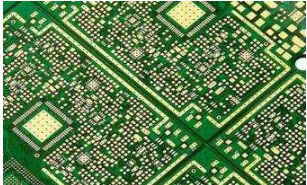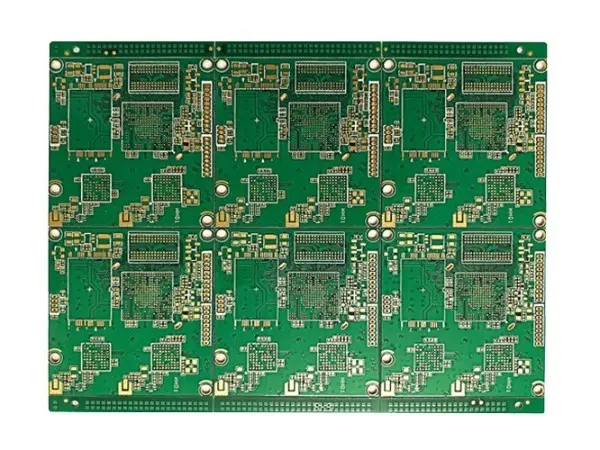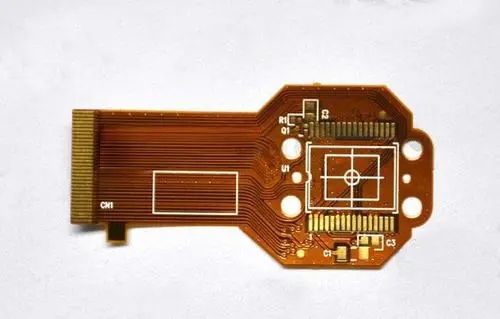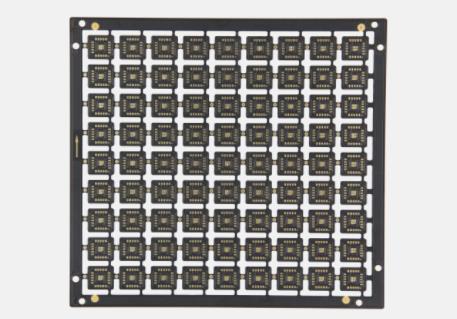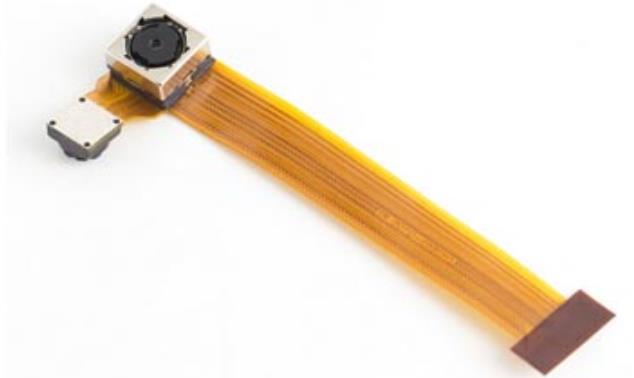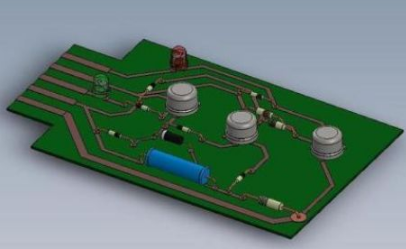
In the fields of automobiles, telecommunICations and computer applications, productivity has become the focus of discussion. The pin spacing is less than 0.4 mm, which is 0.5 mm. The main problem of fine pitch QFP and TSOP packaging is low productivity. However, because the foot pitch of the planar array package is not very SMAll (for example, the flip chip is less than 200 μ m) After reflow soldering, the dmp rate is at least 10 tiMES better than the traditional fine pitch PCB technology. Furthermore, compared with QFP and TSOP packages with the same spacing, considering the automatic alignment during reflow soldering, the requirements for mounting accuracy are much lower.
Another advantage, especially flip chip, is that the occupied area of printed circuit board is greatly reduced. Surface array packaging can also provide better circuit performance.
Therefore, the industry is also developing towards planar array packaging, with a minimum spacing of 0.5mm μ BGA and chip scale package (CSP) are constantly attracting people's attention. At least 20 multinational companies are working on the research of this series of package structures. In the next few years, it is estimated that the consumption of bare chips will increase by 20% every year, of which flip chip will be the fastest growing, followed by bare chips applied to COB (direct on board mounting).

It is estimated that the consumption of flip chip will increase from 500 million chips in 1996 to 2.5 billion chips at the end of this century, while the consumption of TAB/TCP will stagnate, or even show a negative growth. As expected, it will only be about 700 million in 1995.
Mounting method
The principle of mounting varies with different requirements. These requirements include component picking and placing capacity, mounting strength, mounting accuracy, mounting speed and flux fluidity. When considering the mounting speed, one of the main characteristics to be considered is the mounting accuracy.
Picking and mounting
The fewer the mounting heads of the mounting equipment, the higher the mounting accuracy. Positioning axes x, y and θ The mounting head is instalLED on the support frame of the x-y plane of the mounting machine. The most important part of the mounting head is the rotation axis, but the movement accuracy of the z-axis should not be ignored. In the high-performance mounting system, the movement of the z axis is controlled by a microprocessor, and the vertical movement distance and mounting force are controlled by sensors.
One of the main advantages of mounting is that the precision mounting head can move freely in the x and y planes, including taking materials from the waffle plate and multiple measurements of devices on a fixed overhead CAMera.
The most advanced mounting system can reach 4 sigma, 20 μ The main disadvantage of the precision of m is that the mounting speed is low, usually lower than 2000 cph, which does not include other auxiliary actions, such as flip chip soldering flux.
SIMple mounting systems with only one mounting head will soon be eliminated and replaced by flexible systems. For such a system, the support frame is equipped with high-precision mounting head and multi nozzle rotary head, which can be used to mount large BGA and QFP packages. The rotating (or shooter) head can handle irregular shaped devices, fine pitch flip chip, and devices with pin spacing as small as 0.5mm μ BGA/CSP chip. This mounting method is called "collection, picking and mounting".
High performance SMD mounting devices equipped with flip chip rotating heads have appeared in the MARKet. It can mount flip chip and ball grid with diameter of 125 at high speed μ M. Pin spacing is about 200 μ M's μ BGA and CSP chips. The mounting speed of the device with collection, picking and mounting functions is about 5000cph.
Traditional wafer suction gun
Such a system is equipped with a horizontally rotating rotating head, which simultaneously picks up devices from the moving feeder and pastes them onto the moving PCB.
Theoretically, the mounting speed of the system can reach 40000 cph, but it has the following limitations:
The chip pickup shall not exceed the grid disk where the devices are placed;
When the spring driven vacuum nozzle moves on the z-axis, it is not allowed to optimize the working hours or reliably pick up the die from the conveyor belt;
For most surface array packages, the mounting accuracy cannot meet the requirements, and the typical value is higher than 10% of 4 sigma μ m;
It is not possible to apply flux to the micro flip chip.
Collection and mounting
In the "collection and mounting" suction gun system, both rotating heads are mounted on the x-y support frame. Then, the rotary head is equipped with 6 or 12 suction nozzles, which can contact any position on the grid plate. For standard SMD chips, this system can reach 80% at 4 sigma (including theta deviation) μ M mounting accuracy and 20000 pch mounting speed. By changing the positioning dynamic characteristics of the system and the ball grid search algorithm, the system can reach 60% in 4sigma for planar array packaging μ M to 80 μ M and the mounting speed is higher than 10000 pch.
Mounting accuracy
In order to have an overall understanding of different mounting devices, you need to know the main factors that affect the mounting accuracy of surface array packaging. The mounting accuracy of ball grid P //ACC //depends on the type of ball grid alloy, number of ball grids, package weight, etc.
These three factors are interrelated. Compared with ICs packaged by QFP and SOP with the same spacing, most planar array packages require lower mounting accuracy.
Note: Insert equation
For circular pads without solder mask, the maximum allowable mounting deviation is equal to the radius of the PCB pad. When the mounting error exceeds the radius of the PCB pad, the ball grid and the PCB pad will still have mechanical contact. It is assumed that the diameter of the PCB pad is roughly equal to the diameter of the ball grid μ The mounting accuracy of BGA and CSP packaging is required to be 0.15 mm; If the ball grid diameter is 100 μ m. Spacing is 175 μ m. The accuracy is required to be 50 μ m。
In the case of TBGA and CBGA, self alignment is limited. Therefore, the mounting accuracy is required to be high.
Application of flux
The standard large-scale reflow furnace for flip chip ball grid requires flux. Now, the general SMD mounting equipment with strong functions are equipped with built-in flux application devices. Two commonly used built-in supply methods are coating and immersion welding.
The coating unit is installed near the mounting head. Before flip chip mounting, apply flux on the mounting position. The amount of coating at the center of the mounting position depends on the size of the flip chip and the wetting characteristics of the flux on specific materials. It should be ensured that the flux coating area is large enough to avoid the solder pad missing due to errors.
In order to effectively fill in the non cleaning process, the flux must be a non cleaning (residue free) material. Liquid flux always contains few solid substances, which is most suitable for non cleaning process.
However, due to the fluidity of the liquid flux, after flip chip mounting, the movement of the conveyor belt of the mounting system will cause the inertial displacement of the chip. There are two ways to solve this problem:
Set a waiting time of several seconds before PCB transmission. During this time, the flux around the flip chip volatilizes rapidly to improve the adhesion, but this will reduce the output.
You can adjust the acceleration and deceleration of the conveyor belt to match the adhesion of PCB flux. The smooth movement of the conveyor belt will not cause chip displacement.
The main disadvantage of the flux coating method is that its cycle is relatively long. For each device to be coated, the mounting time increases by about 1.5s.
DIP welding method
In this case, the flux carrier is a rotating barrel and scraped into a flux film (about 50 μ m) This method is applicable to high viscosity flux. By simply dipping the flux at the bottom of the grid, the flux consumption can be reduced during the manufacturing process.
The following two process sequences can be used for this method:
After the alignment of the optical grid and the immersion flux of the grid, the mounting shall be carried out. In this order, the mechanical contact between the flip chip ball grid and the flux carrier will have a negative impact on the mounting accuracy.
After alignment of the ball grid immersion flux and the optical ball grid, mount them. In this case, the flux material will affect the optical ball grid alignment image.
Dipping flux method is not suitable for high volatile flux, but its speed is much faster than that of coating method. According to different mounting methods, the additional time for each device is about 0.8s for pure pickup and mounting, and 0.3s for collection and mounting
When standard SMT is used to mount ball grid with spacing of 0.5mm μ When BGA or CSP, there are also some things that should be noted: μ BGA/CSP standard SMD) PCB products, obviously the most critical process is flux coating printing. Logically speaking, SMT mounting method integrating traditional flip Chip Manufacturing process and flux application can also be adopted.
然后
联系
电话热线
13410863085Q Q

微信

- 邮箱




